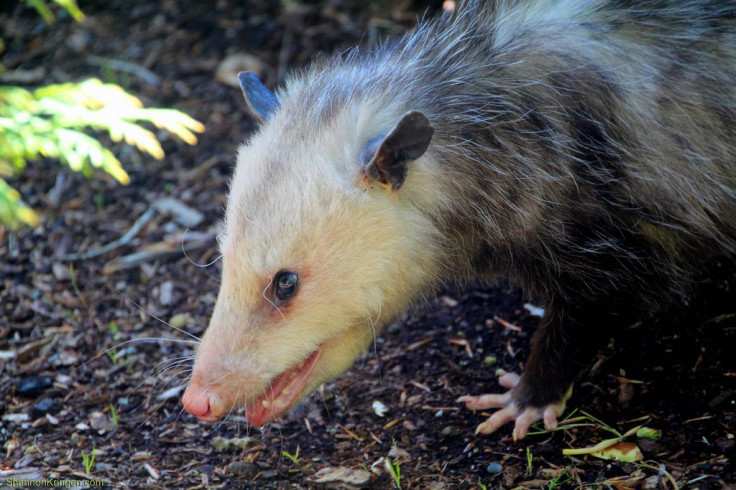Opossum-Based Antidote Provides New Route For Treating Deadly Snake Bites

Unlike humans, who swell up and die fairly quickly from snake bites, opossums are curiously immune to the otherwise deadly venom. Now scientists are dusting off old research into what gives the animal this special ability, in order to save thousands of human lives.
Researchers from San Jose State University recently presented the findings of a new study at the 249th National Meeting & Exposition of the American Chemical Society, in Denver. Lead investigator Dr. Claire Komives explained the initial research into the opossum’s immunity was done in the 1940s, but since then the data has remained mostly stagnant. With new evidence that a certain peptide can be utilized in an antidote, fatal snake bites could one day be a thing of the past.
Most antivenoms are made by injecting animals such as horses, goats, and rabbits with diluted insect or snake venom, which then produce an antibody response that can be harvested. However, Komives says, “the serum has additional components … so the patient often has some kind of adverse reaction, such as a rash, itching, wheezing, rapid heart rate, fever, or body aches.” The serum they are developing comes with none of the side effects of traditional batches.
Instead of relying on animal injections to produce the key antivenom peptide, which was originally identified in opossum models two decades ago, the team used the bacterium E. coli. Though the exact mechanism for neutralizing venom’s lethality is still unknown, Komives suspects the peptide is somehow binding to the venom protein, “rendering it no longer toxic.” Bites from U.S. Western Diamondback rattlesnakes and Russell's Viper venom from Pakistan, which are normally deadly, failed to kill the mice.
Worldwide, snake bites make up between 20,000 and 94,000 deaths each year. The total number of bites, known in toxicology circles as “envenomings,” range between 421,000 and 1,841,000. Poorer populations in third-world countries face the greatest risks to snake bites, as they live in areas more hospitable to the reptiles and are also less likely to have the necessary resources for treatment. Even with timely care, victims may face lifelong psychological damage or physical damage to the afflicted tissue. Some tissues may even go on to die altogether.
A large upside to Komives’s antivenom is its affordability. Unlike animal-based serums, a serum made from bacteria can be reproduced in much larger quantities for cheap. Based on the existing data, the antivenom would also work against other bites from spiders, scorpions, and other snakes, and could protect against brushes with certain toxic plants. But perhaps its greatest contribution is its flexibility.
“Since when a snake bites, it injects venom into the victim in different ways, depending on which part of the body is bitten and the angle of the bite, it is likely that each snake bite would need to be treated differently,” Komives said. As a result, more antivenom is needed to address whatever venom isn’t targeted on the first pass. The substitute her team is developing takes away that demand. Without any observed negative effects, the antivenom could be injected in one large dose that wipes out all the venom at once, no matter how the bite happened.
Komives and her team plan to test this theory in future trials. They’ll continue testing with mouse models to see how their antivenom stacks up against a variety of animal- and plant-based toxins, and monitor the effects of increasing the dosage.



























